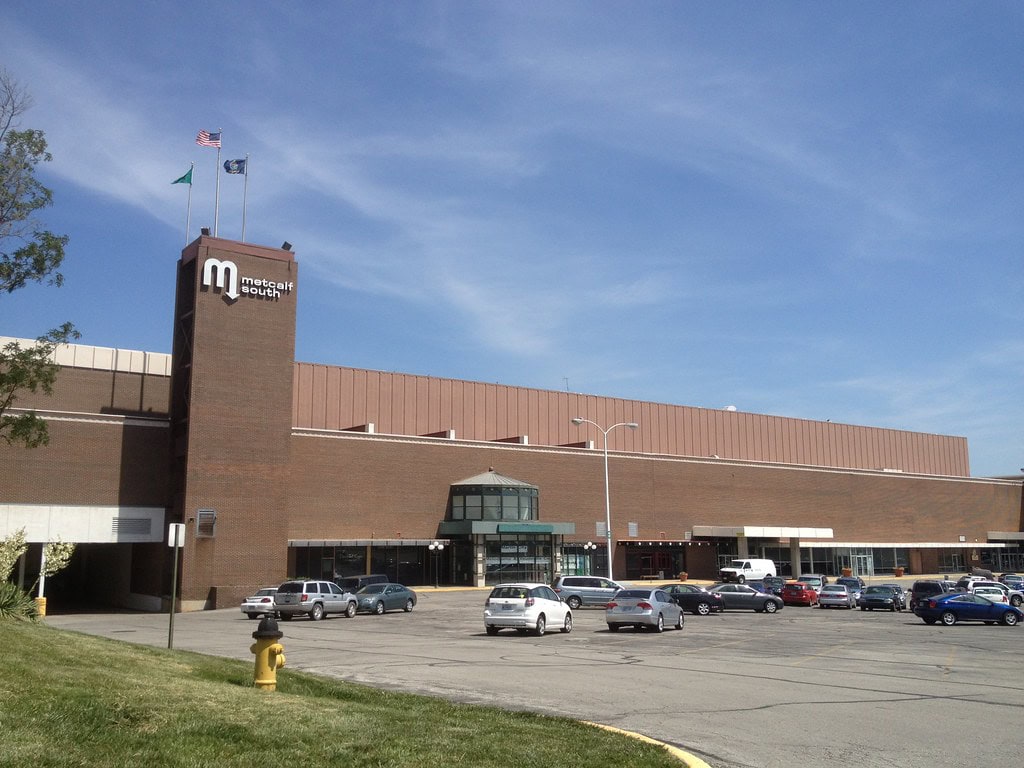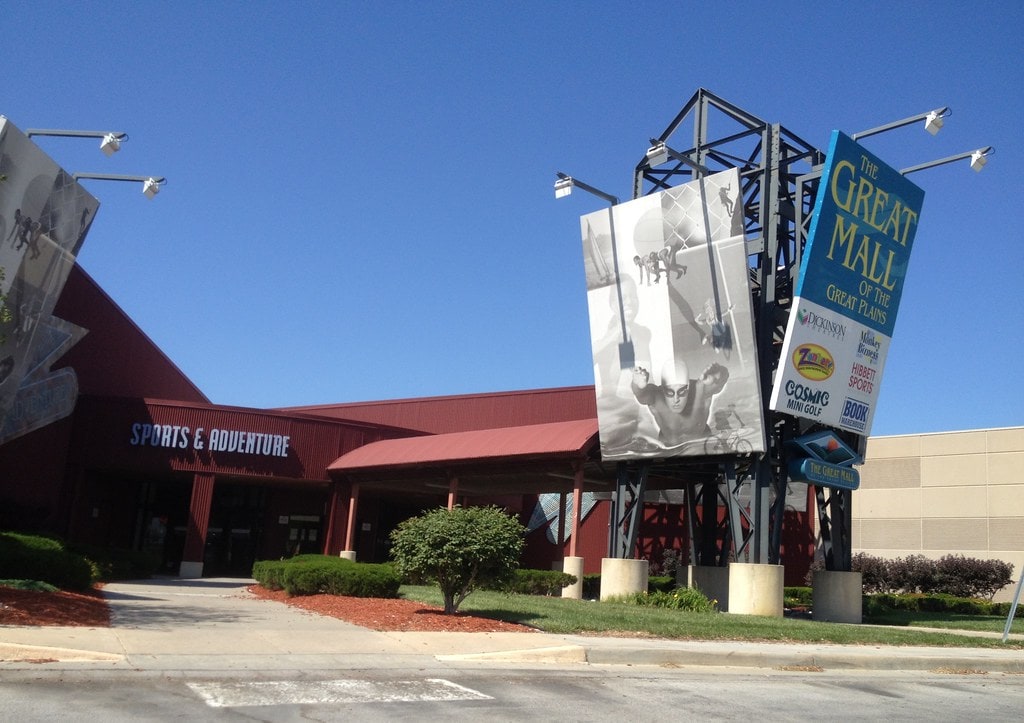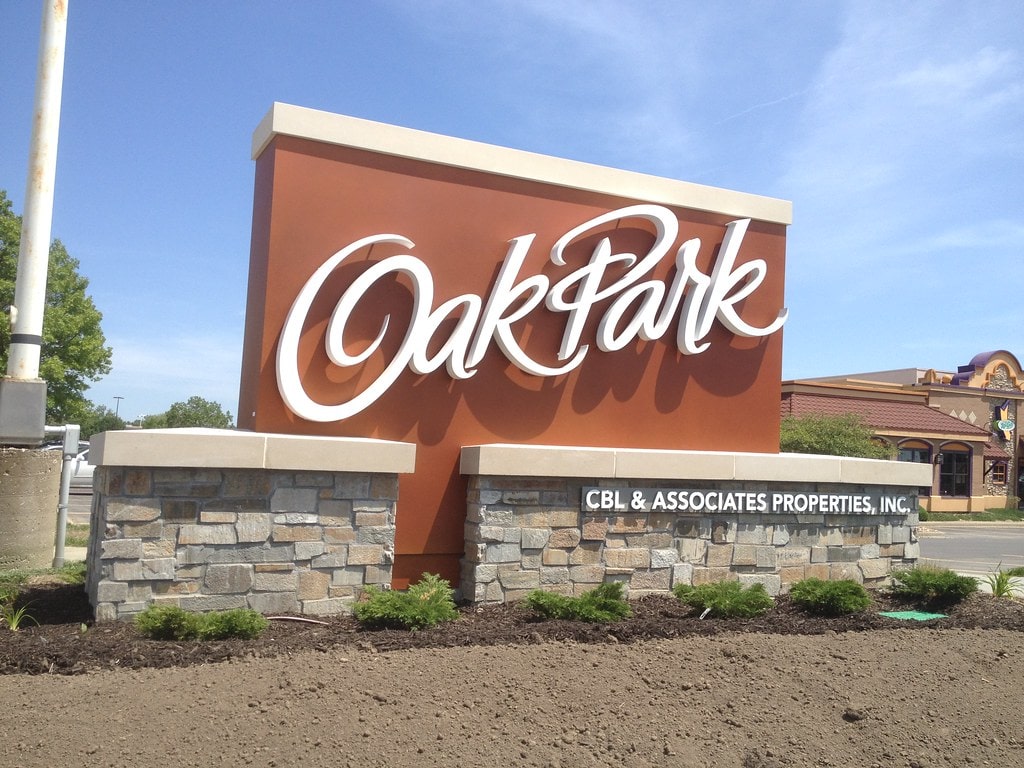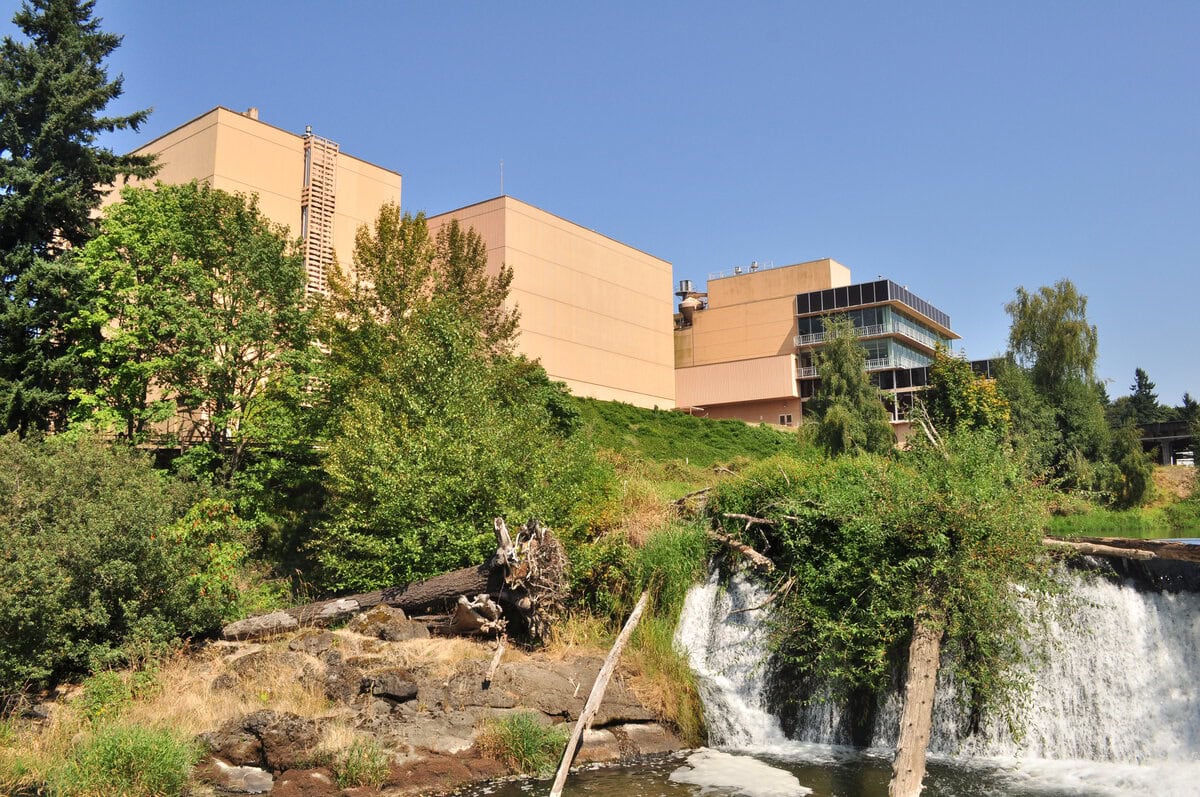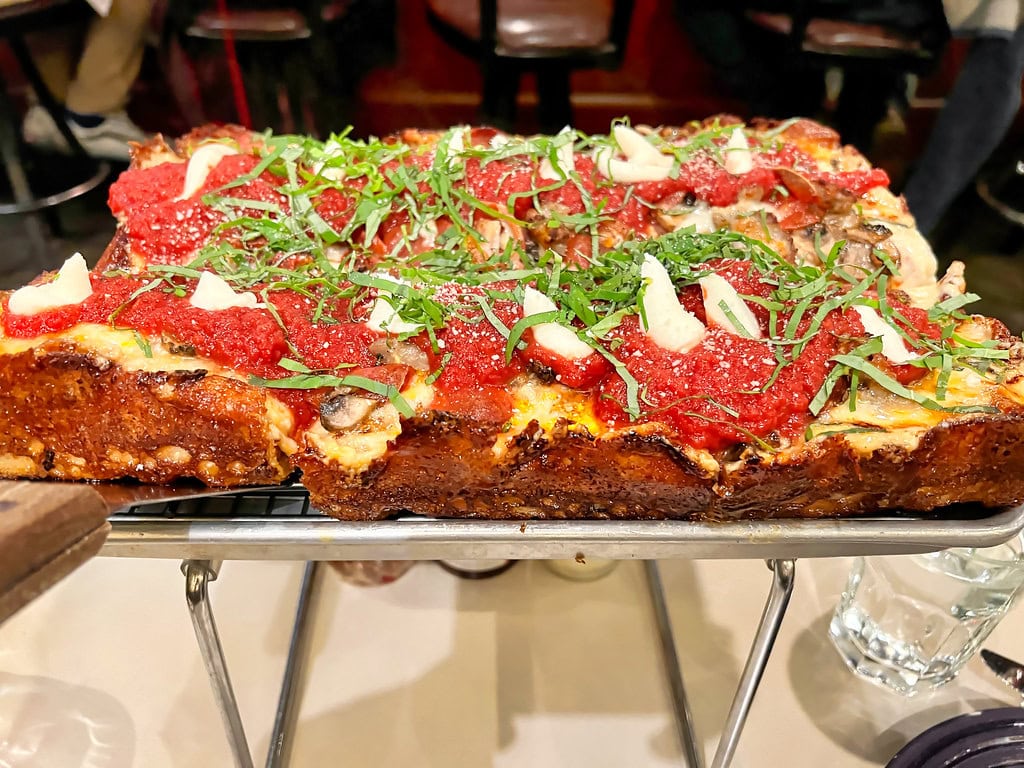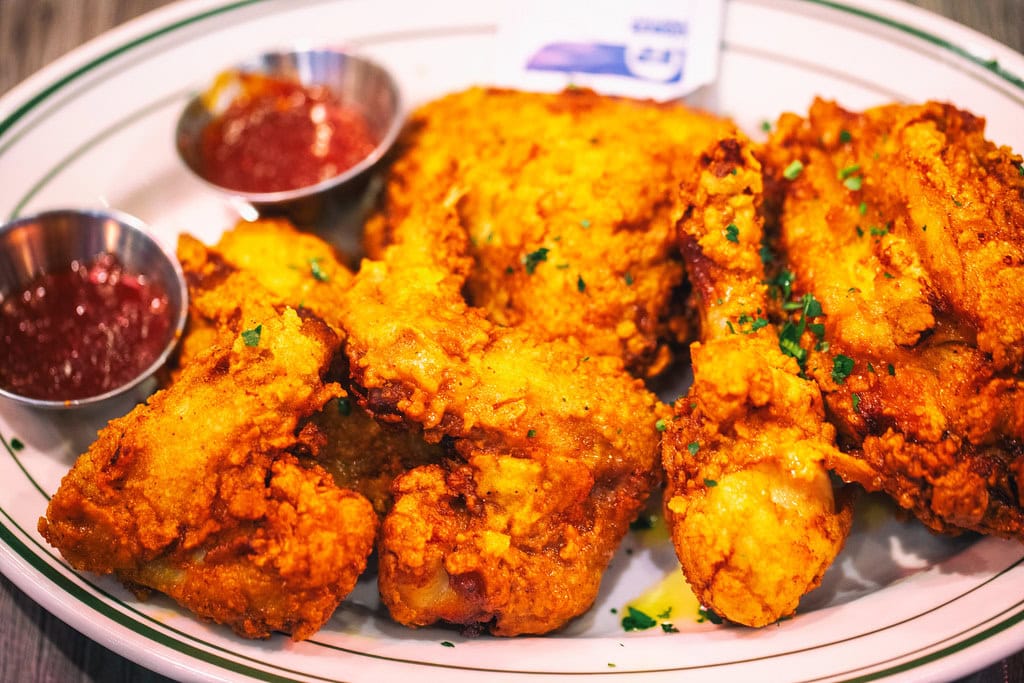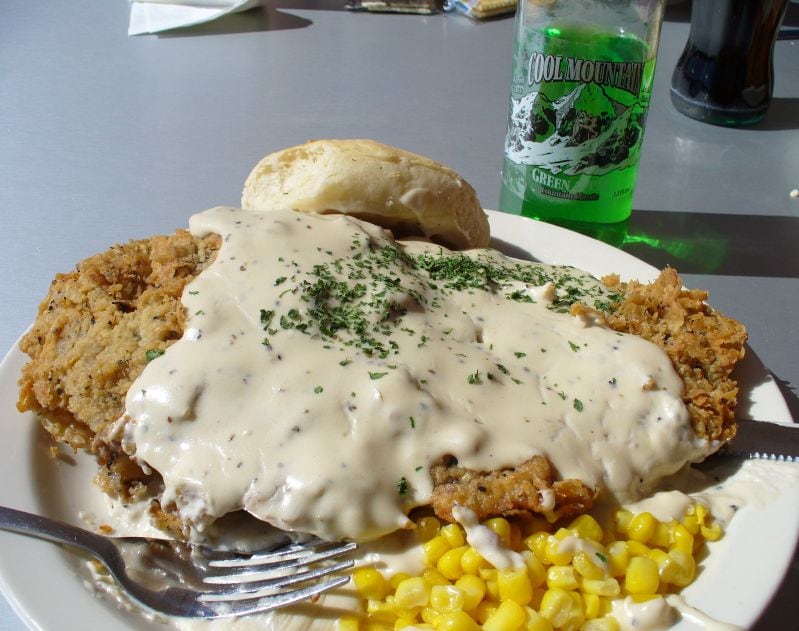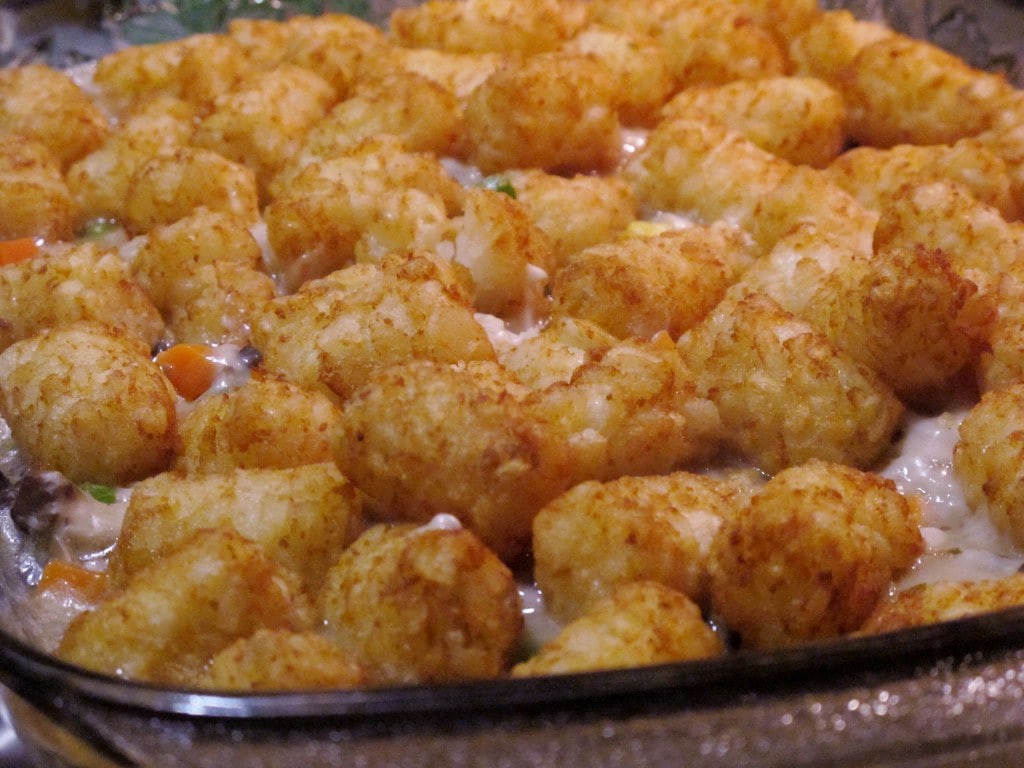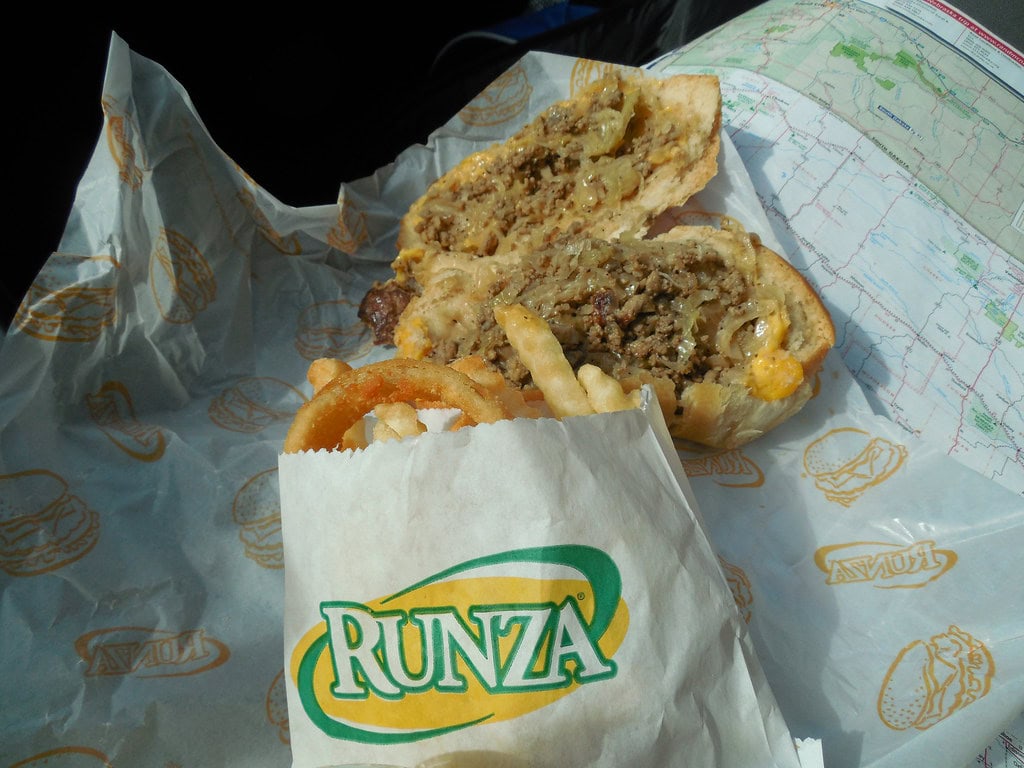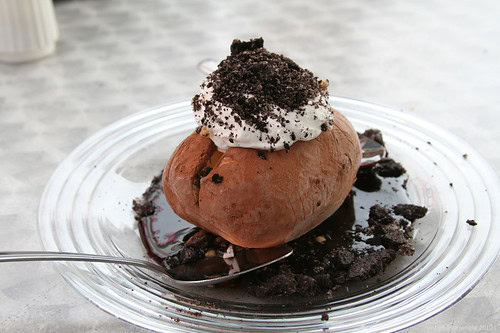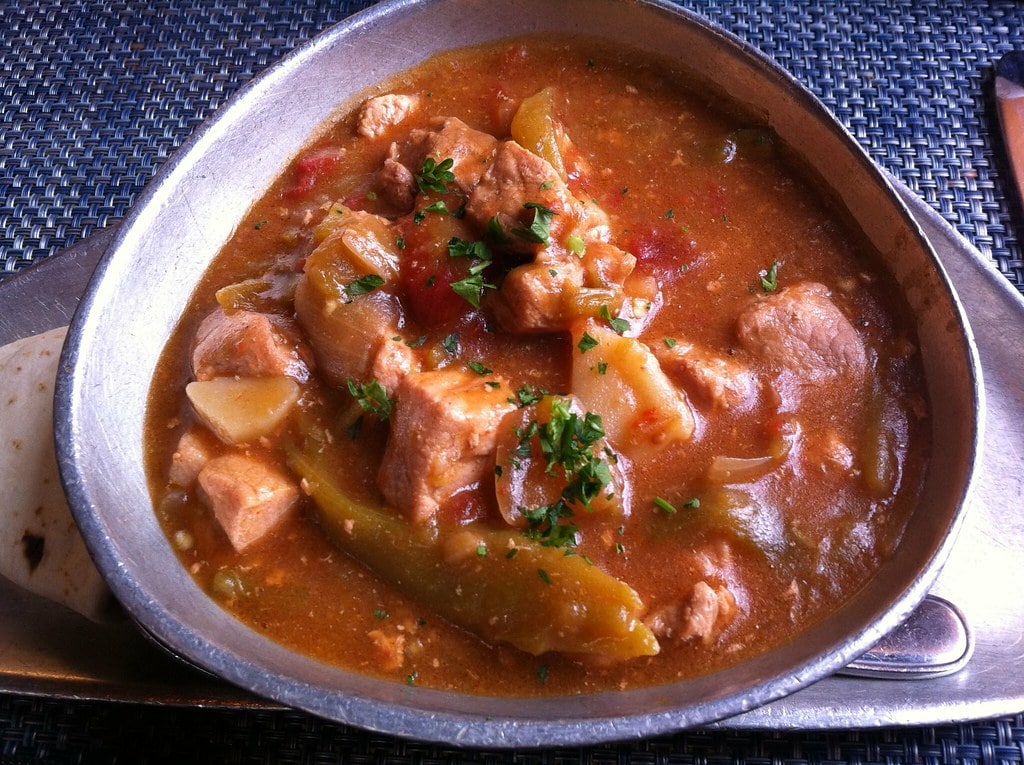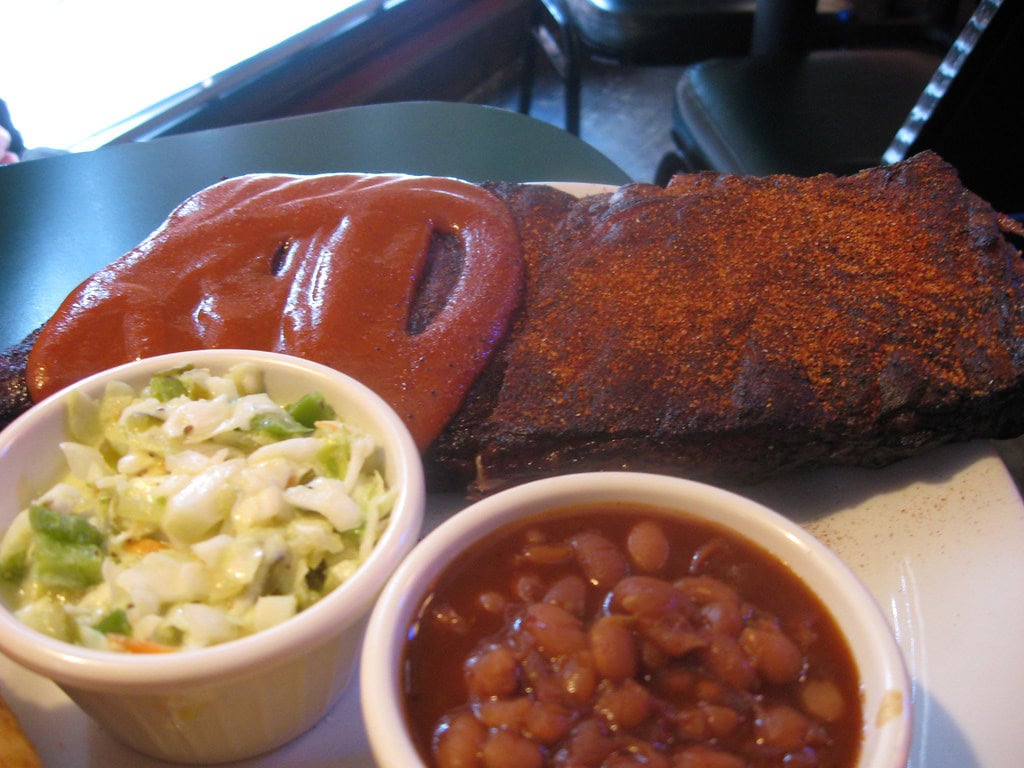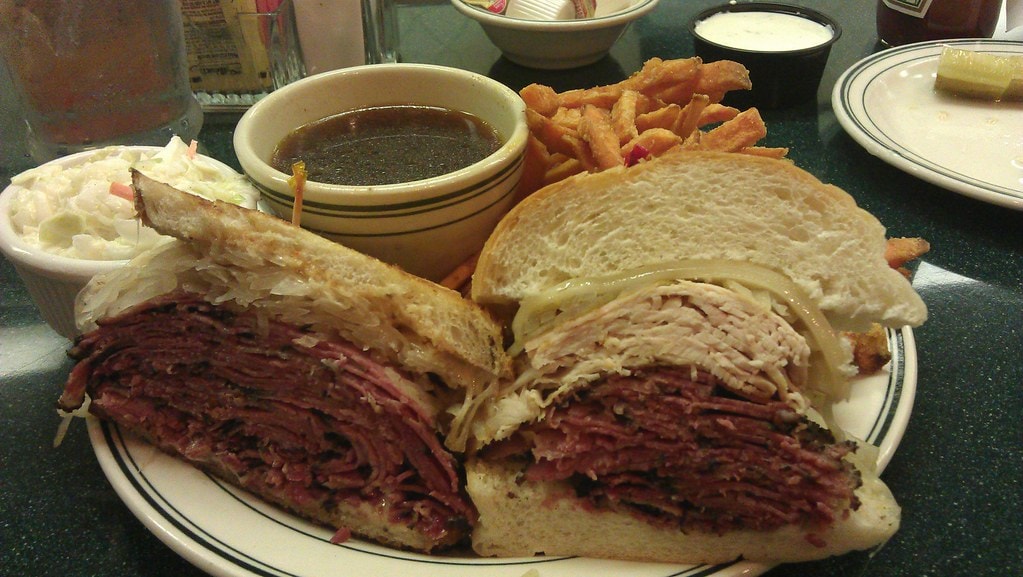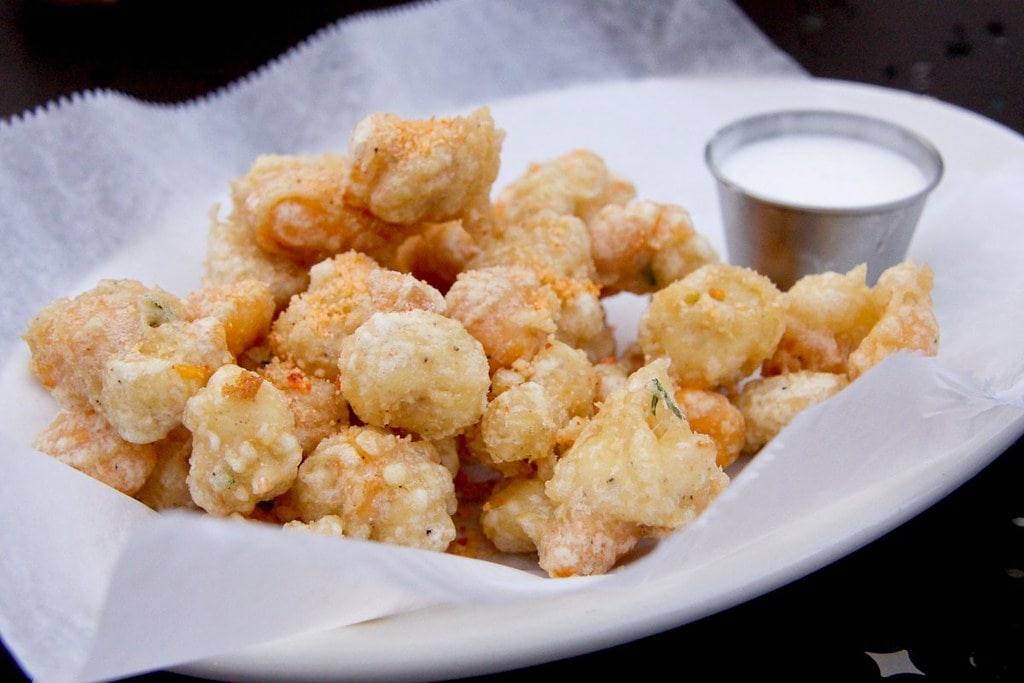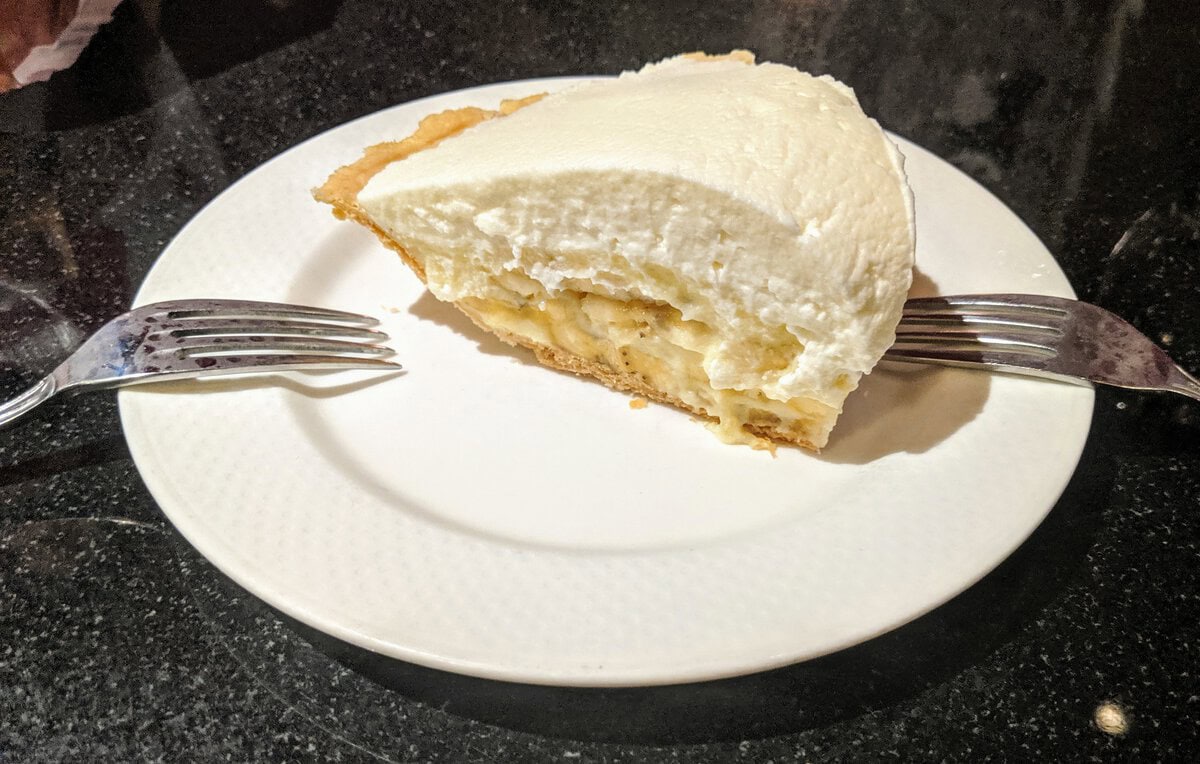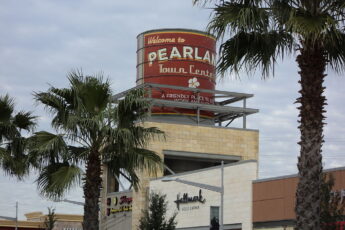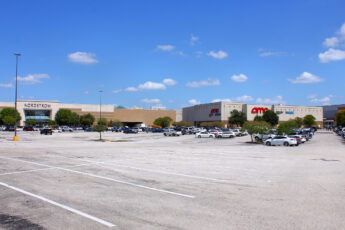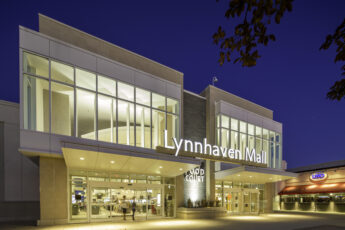Kansas City-Style Barbecue: The Heart of Smoked Meat
Kansas City-style barbecue is all about slow-smoked meat, bold flavors, and a sauce that sticks to your fingers.
Kansas City barbecue isn't tied to one type of meat, it's open to anything that can be smoked.
Brisket, ribs, pulled pork, sausage, turkey, even lamb, if it can hold smoke, it belongs on the pit.
That's one of the biggest things that sets it apart from other regional styles. While Texas leans into beef and the Carolinas stick to pork, Kansas City welcomes everything.
The cooking process starts with a dry rub, a mix of spices that gives the meat an extra layer of flavor before it ever touches the smoker.
Most pitmasters have their secret blends, but common ingredients include salt, pepper, paprika, garlic powder, and brown sugar.
The sugar helps create a caramelized crust, or "bark," that locks in moisture and enhances the smoky flavor.
Hickory wood is the go-to fuel for most Kansas City-style smokers, though some pitmasters mix in oak, cherry, or pecan for a slightly different profile.
The key is low and slow, temperatures around 225°F for hours, sometimes even overnight, depending on the cut.
The goal is simple: melt-in-your-mouth tenderness with a deep, smoky taste.
Then there's the sauce. Kansas City's version is thick, tomato-based, and slightly sweet, usually made with molasses or brown sugar.
It's not as tangy as Carolina-style vinegar sauce or as thin as Texas mop sauce. However, it clings to the meat, making every bite a mix of smoke, spice, and sweetness.
Some versions have a little heat from cayenne or black pepper, while others lean more toward a rich, smoky sweetness.
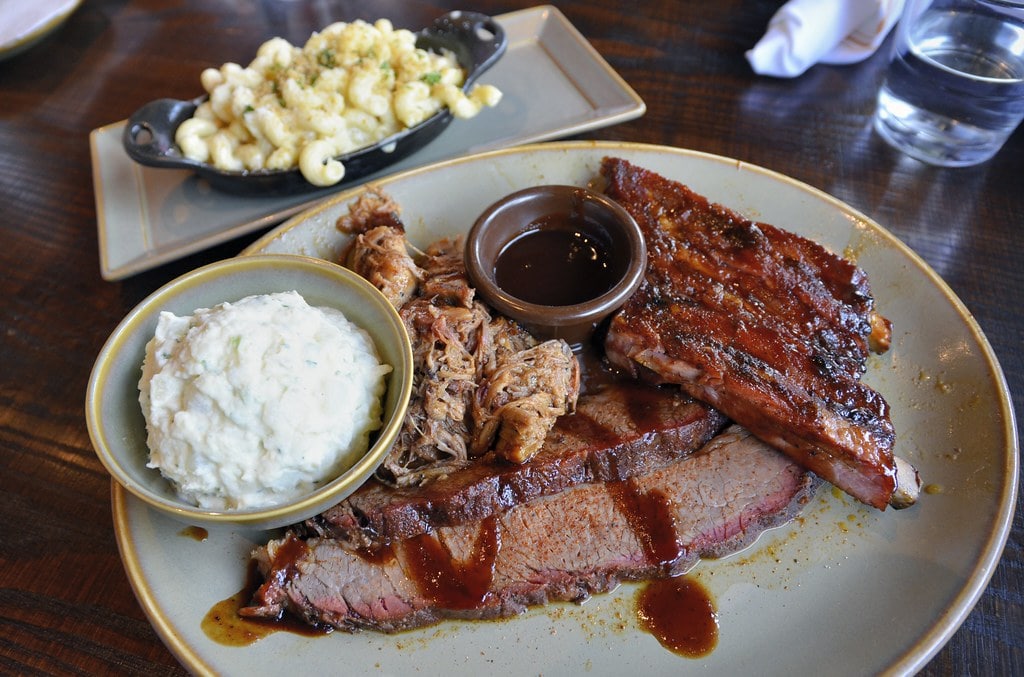
One of the most famous Kansas City barbecue staples is burnt ends.
These crispy, caramelized chunks of brisket started as a byproduct, trimmings that pitmasters would snack on or give away to customers waiting in line.
Now, they're a menu item on their own, served in sandwiches, on platters, or even tossed in sauce and eaten straight from the tray.
Kansas City-style barbecue is all about balance, smoke, seasoning, and sauce combine to create something that's both simple and packed with flavor.
It's a style that rewards patience and attention to detail, from the moment the meat is rubbed down to the final drizzle of sauce.
The Most Famous Kansas City BBQ Joints
Kansas City has no shortage of barbecue spots, and each one brings its take on the craft.
Some have been around for decades, passed down through generations, while others are newer but have already made a name for themselves.
Whether it's the sauce, the smoking method, or a particular cut of meat, every place has something that makes it stand out.
Arthur Bryant's Barbecue
Arthur Bryant's is one of the most well-known barbecue restaurants in Kansas City.
Its roots go back to Henry Perry, the man who started it all. When Perry retired, his apprentice, Charlie Bryant, took over and then passed it on to his brother Arthur.
The restaurant still sits at 1727 Brooklyn Avenue, serving slabs of smoked meat just like it has for decades.
One thing that sets Arthur Bryant's apart is the sauce. It's not as sweet as most Kansas City-style sauces; it has a tangy, vinegar-heavy kick with a gritty texture.
The burnt ends here are a crowd favorite, and the ribs are known for their deep, smoky flavor.
Gates Bar-B-Q
You can't talk about Kansas City-style barbecue without mentioning Gates.
Founded in 1946 by George W. Gates, this family-run restaurant chain is one of the city's barbecue powerhouses.
Walk into any Gates location, and you'll be greeted with a loud, almost legendary, "Hi, may I help you?" before you even make it to the counter.
The menu features everything from beef brisket to pork spare ribs, all slathered in Gates' signature sauce, a rich, spicy blend with more tang than sweetness.
The portions are huge, and the meat is smoked until it practically falls apart.
The burnt ends sandwich is one of the most popular items, stacked high with caramelized brisket tips.
Joe's Kansas City Bar-B-Que
Joe's Kansas City, originally called Oklahoma Joe's, started inside a gas station.
That hasn't stopped it from becoming one of the most respected barbecue joints in the country.
The original location at 47th and Mission is still inside a working gas station, and the line often stretches out the door.
The restaurant's claim to fame is the Z-Man sandwich, a toasted Kaiser roll filled with slow-smoked brisket, melted provolone, crispy onion rings, and a drizzle of sauce.
The burnt ends, pulled pork, and smoked chicken are other must-tries.
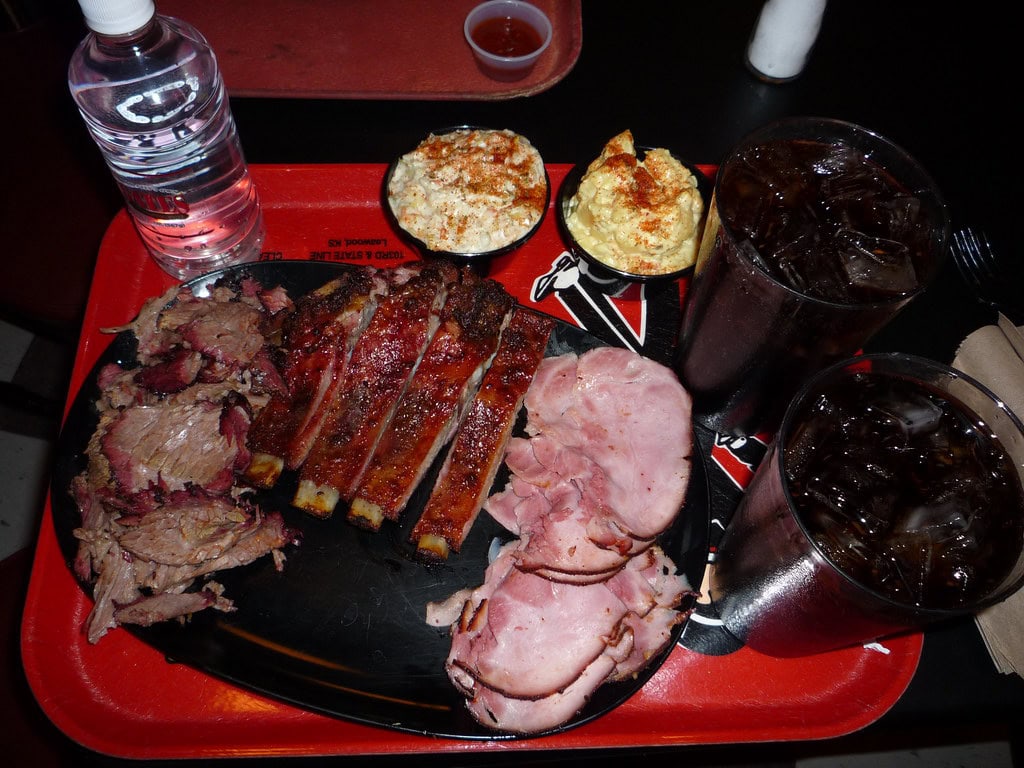
Jack Stack Barbecue
Jack Stack takes Kansas City barbecue in a slightly different direction.
It started as a small family business in 1957 under the name Smokestack Barbecue, but over the years, it expanded into a more upscale dining experience.
The menu includes the usual brisket and ribs, but it also features hickory-grilled steaks, smoked lamb ribs, and seafood.
Jack Stack's signature side dishes also set it apart. The cheesy corn bake, a rich, creamy mix of corn, cheddar cheese, and bits of smoked meat, is one of the restaurant's most talked-about items.
The burnt ends are a favorite here as well, served alongside pit beans and coleslaw.
Q39
Q39 is one of the newer players in the Kansas City barbecue scene, but it's already built a strong following.
Opened in 2014 by championship pitmaster Rob Magee, Q39 takes a more modern, chef-driven approach to barbecue. The meats are wood-fired, and the flavors are bold but balanced.
The restaurant's brisket is one of the biggest draws. It is cooked to a perfect balance of smoky, juicy, and tender.
The ribs, pulled pork, and house-made sausage also get plenty of attention.
Unlike many old-school barbecue spots, Q39 offers a more refined dining experience, but the focus is still on the meat.
Kansas City has dozens of other barbecue spots, each with its loyal following.
Some swear by one, while others love to jump from place to place, chasing the best-burnt ends, ribs, or sandwiches. No matter where you go, the city's barbecue culture is alive and thriving.
How to Make Kansas City-Style Barbecue at Home
Bringing Kansas City-style barbecue into your backyard takes time, patience, and the right ingredients.
The process isn't complicated, but getting the best flavor depends on using a good dry rub, the right wood, and a slow cooking method.
Whether you're smoking brisket, ribs, or pulled pork, following these steps will get you close to what the pros serve.
Step 1: Choose Your Meat
Kansas City barbecue works with almost any cut, but some classics stand out.
- Brisket - Known for burnt ends, brisket needs long, slow smoking to break down the fat and connective tissue.
- Pork ribs - Both baby back and spare ribs take well to the city's smoky, sweet flavors.
- Pork shoulder - Smoked low and slow, then pulled apart and served with sauce on a bun.
- Sausage - Often overlooked, smoked sausage absorbs wood flavor and works well with Kansas City-style sauce.
Start with fresh, high-quality meat. Fat marbling helps keep the meat moist during long cooking times, so don't trim too much.
Step 2: Apply a Dry Rub
A dry rub adds depth before the meat even touches the smoker. Common ingredients include:
- Salt
- Black pepper
- Paprika
- Brown sugar
- Garlic powder
- Onion powder
- Cayenne pepper (for heat)
Coat the meat evenly, pressing the rub in so it sticks. Some pitmasters let it sit overnight to let the flavors sink in, but even an hour makes a difference.
Step 3: Set Up Your Smoker
Kansas City barbecue relies on hickory wood for its deep, rich smoke. Some cooks mix in oak or fruitwoods like cherry for added layers of flavor.
Keep the temperature low, between 225°F and 250°F, and avoid letting the fire get too hot.
Slow cooking at this range breaks down the fat without drying out the meat.
A water pan in the smoker helps maintain moisture.
Step 4: Smoke Low and Slow
The time it takes depends on the cut:
- Brisket - 12 to 16 hours
- Pork ribs - 5 to 6 hours
- Pulled pork - 8 to 10 hours
- Sausage - 2 to 3 hours
Resist the urge to open the smoker too often. Every time you lift the lid, heat escapes, slowing the process.
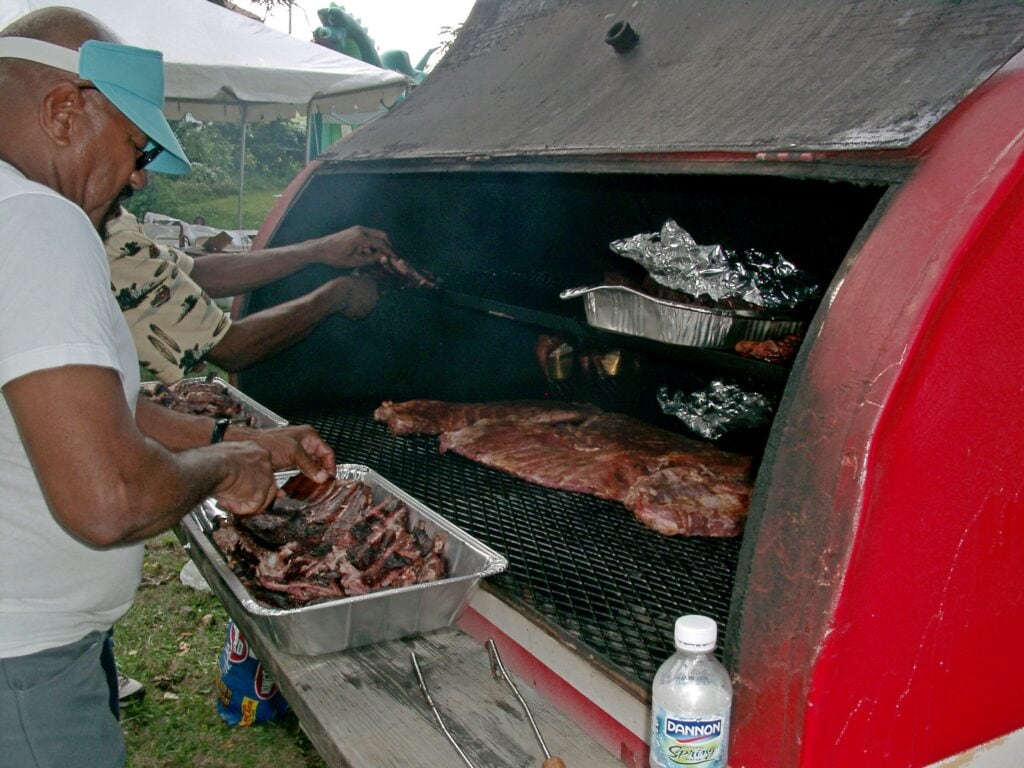
Step 5: Add the Sauce at the Right Time
Kansas City barbecue sauce is thick, sweet, and tomato-based with molasses or brown sugar.
Since sugar burns at high heat, wait until the last 30 to 45 minutes before brushing on the sauce.
Adding it too early can lead to a bitter, burnt crust.
Step 6: Let It Rest and Serve
Once the meat reaches the right tenderness, pull it from the smoker and let it rest.
- Brisket should sit for at least 30 minutes before slicing.
- Ribs can be served right away, but some cooks wrap them in foil and let them rest for 15 minutes.
- Pulled pork needs time to cool before shredding, which helps retain juices.
Serve with extra sauce on the side, along with Kansas City staples like baked beans, coleslaw, or cheesy corn. Smoking takes time, but the result is worth it.
The Origins: Where It All Began
Kansas City's barbecue story starts with Henry Perry, a man who built a reputation for smoking meat long before barbecue became a citywide obsession.
In the early 1900s, Perry set up shop in an old trolley barn near 19th and Highland, serving slow-cooked ribs and beef wrapped in newspaper.
His cooking methods came from the South, but he made them his own, smoking meats with hickory and oak wood and serving them with a thin, peppery sauce that packed a punch.
Back then, barbecue was street food. Perry ran a simple operation, selling slabs of smoked meat to workers in Kansas City's booming industrial districts.
His customers weren't looking for anything fancy, just tender, flavorful meat that could be eaten with their hands.
Perry gave them exactly that, and his popularity grew. As his business thrived, Perry trained a handful of pitmasters who would later shape the Kansas City barbecue scene.
Among them was Charlie Bryant, who took over Perry's restaurant when he retired.
Charlie then passed it to his brother, Arthur Bryant, who tweaked Perry's original sauce recipe, making it thicker and slightly sweeter.
That change, small as it seemed, helped define Kansas City-style barbecue for generations.
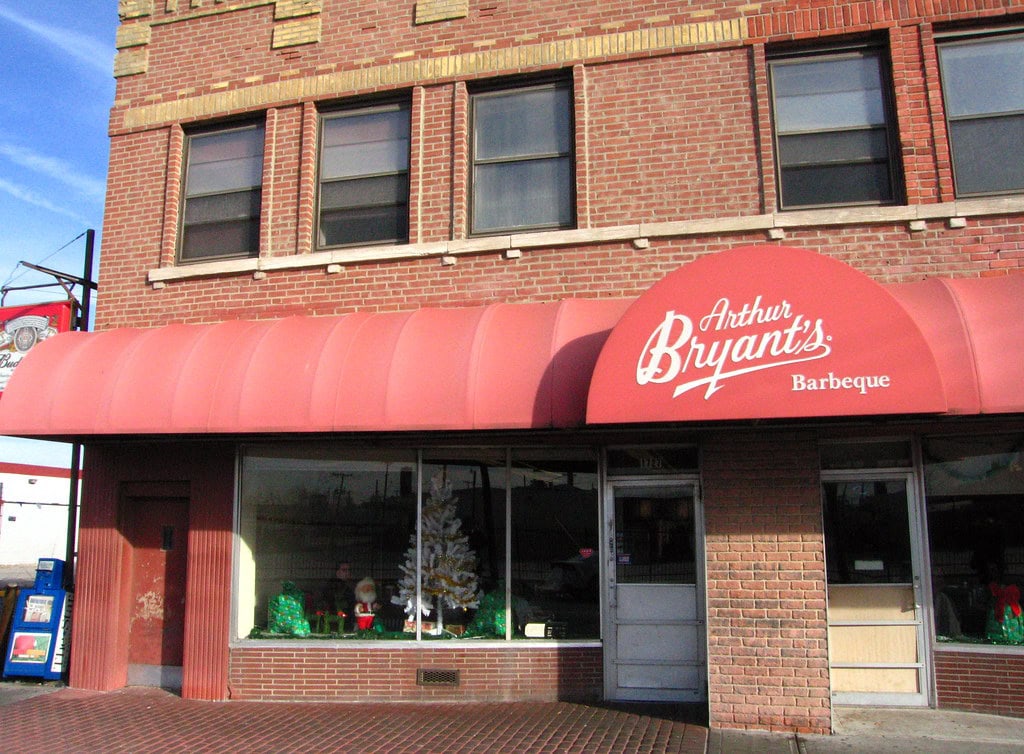
Meanwhile, another local, George Gates, launched Gates Bar-B-Q in 1946, adding his spin to the craft.
His sauce was different, richer, spicier, and a bit tangy. Like Arthur Bryant's, his restaurant became a local institution.
By the mid-20th century, barbecue in Kansas City had moved beyond street stands. Restaurants took over, and competition between pitmasters pushed the style forward.
What started with Perry's simple setup had become a citywide tradition, one that only kept growing.
The Role of the American Royal World Series of Barbecue
Kansas City isn't just home to some of the best barbecue restaurants; it also hosts one of the biggest barbecue competitions in the world.
The American Royal World Series of Barbecue is an annual event that brings together pitmasters, backyard cooks, and barbecue fans for days of smoking, grilling, and competing.
It's more than a contest; it's a gathering of people who take barbecue seriously.
How It Started
The American Royal started as a livestock show in 1899, long before barbecue was part of the event.
It wasn't until 1980 that organizers introduced a barbecue contest, and it quickly became the main attraction.
What started as a local competition has grown into a massive event, drawing teams from across the country and even internationally.
The competition moved to the Kansas Speedway in 2015, allowing for more teams, bigger crowds, and a festival-like atmosphere.
Every fall, thousands of people gather to watch pitmasters fire up their smokers, fine-tune their sauces, and battle for top honors.
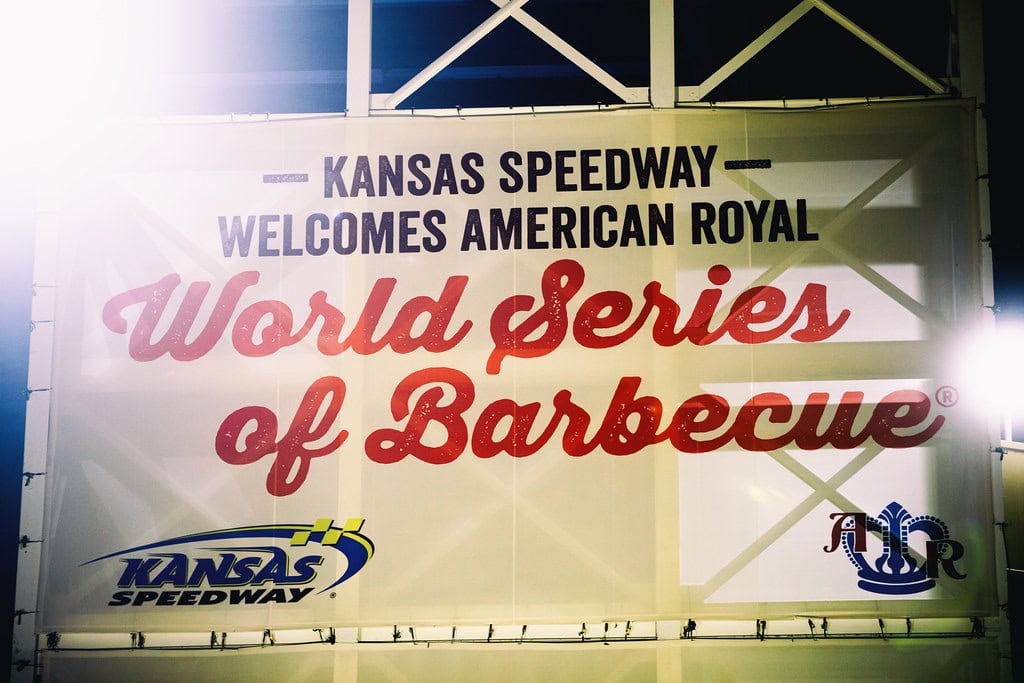
The Competition
Barbecue teams compete in multiple categories, each judged separately.
The main event is the Open Competition, which anyone can enter, professional teams, restaurant crews, or even dedicated backyard smokers.
Then there's the Invitational Competition, reserved for teams that have won a qualifying contest elsewhere.
Winning the Invitational means beating some of the best barbecue teams in the world.
Teams prepare meat in four core categories:
- Brisket - Judges look for a balance of smoke, tenderness, and flavor.
- Pork ribs - The meat should have a perfect bite, tender but not falling off the bone.
- Pork shoulder - Pulled pork is judged on texture, seasoning, and how well the smoke enhances the flavor.
- Chicken - Some teams go with traditional smoked chicken, while others use techniques like butter-basting or a crispy skin finish.
Beyond the core meats, the competition has additional categories, including sausage, turkey, and even desserts.
Some teams get creative, smoking everything from baked beans to cobblers.
The Atmosphere
The American Royal isn't just for competitors; thousands of fans show up every year to eat, drink, and celebrate barbecue culture.
The event includes live music, beer tents, and vendor booths selling sauces, rubs, and grilling equipment.
Many teams also set up massive tents and throw private parties, making it one of the liveliest barbecue gatherings in the country.
Some years, the event also includes a Barbecue Hall of Fame induction, recognizing pitmasters, restaurant owners, and industry figures who have helped shape the barbecue world.
Past inductees include famous names like Henry Perry, Arthur Bryant, and George Gates.
Kansas City's love for barbecue runs deep, and the American Royal is proof.
It's a weekend where barbecue takes center stage, and competition meets tradition in a cloud of hickory smoke.
Kansas City Barbecue in Pop Culture
Kansas City-style barbecue is been featured in TV shows, movies, music, and even political debates.
Over the years, it has built a reputation that stretches far beyond Missouri, drawing attention from food critics, celebrities, and barbecue lovers across the country.
Whether it's a documentary about pitmasters or a casual mention in a hit song, Kansas City's smoky, sauce-covered legacy keeps finding its way into popular culture.
TV and Food Shows
Kansas City barbecue has been the subject of countless food shows. Diners, Drive-Ins and Dives has featured multiple Kansas City barbecue joints, highlighting places like Joe's Kansas City Bar-B-Que and Q39.
Man v. Food sent host Adam Richman to take on mammoth barbecue platters, giving national audiences a firsthand look at the city's approach to smoked meats.
Shows on the Food Network, Travel Channel, and even Netflix have explored what makes Kansas City barbecue different.
The combination of slow-smoked meat, sweet-and-spicy sauce, and the famous burnt ends always stands out.
Some documentaries, like BBQ Pitmasters, have also included Kansas City-style cooking as part of larger discussions on American barbecue culture.
Music and Sports
Barbecue and Kansas City sports go hand in hand. Chiefs and Royals games wouldn't be the same without tailgating, where fans fire up smokers and share homemade versions of their favorite restaurant dishes.
After the Chiefs won the Super Bowl in 2020, Kansas City barbecue became a talking point nationwide, with players and coaches bragging about their favorite local spots.
Music has also played a role in spreading the city's barbecue culture.
Kansas City's jazz scene, which took off in the 1920s, grew alongside its barbecue culture. Musicians gathered at places like Arthur Bryant's after-shows.
Today, Kansas City barbecue festivals often feature live blues and jazz performances, keeping that connection alive.
Celebrity Endorsements
Over the years, Kansas City barbecue has built a long list of famous fans. Anthony Bourdain called Joe's Kansas City Bar-B-Que one of the best places to eat before you die.
Presidents, including Barack Obama, have made stops at Kansas City barbecue joints while on the campaign trail.
Even celebrities like Paul Rudd and Jason Sudeikis, both Kansas City natives, frequently talk about their love for local barbecue.
During Super Bowl week in 2020, a heated Twitter debate kicked off between Kansas City and San Francisco over which city had better food.
When it came to barbecue, Kansas City didn't hold back, with local chefs and fans arguing that no other city could compete.
Barbecue in Film and Literature
Kansas City barbecue has even made its way into movies and books. The film Kansas City (1996), which centers around the city's jazz scene, features barbecue as part of its backdrop.
In literature, travel guides and cookbooks frequently highlight Kansas City as a must-visit for anyone serious about barbecue.
Some pitmasters have also published books detailing their recipes and smoking techniques, giving readers a chance to recreate Kansas City-style barbecue at home.
These books often include not just cooking tips but also personal stories about the history of the city's barbecue culture.
Kansas City-style barbecue has become more than just food, it's a recognizable piece of American culture.
Whether through TV, sports, music, or celebrity shoutouts, its reputation keeps growing, one smoky bite at a time.
Modern Takes on Kansas City Barbecue
Kansas City barbecue has deep roots, but that doesn't mean it stays the same.
New restaurants, pitmasters, and food trends have brought fresh ideas while keeping the classic flavors intact.
From different meats to new smoking techniques, the city's barbecue scene keeps evolving without losing what makes it special.
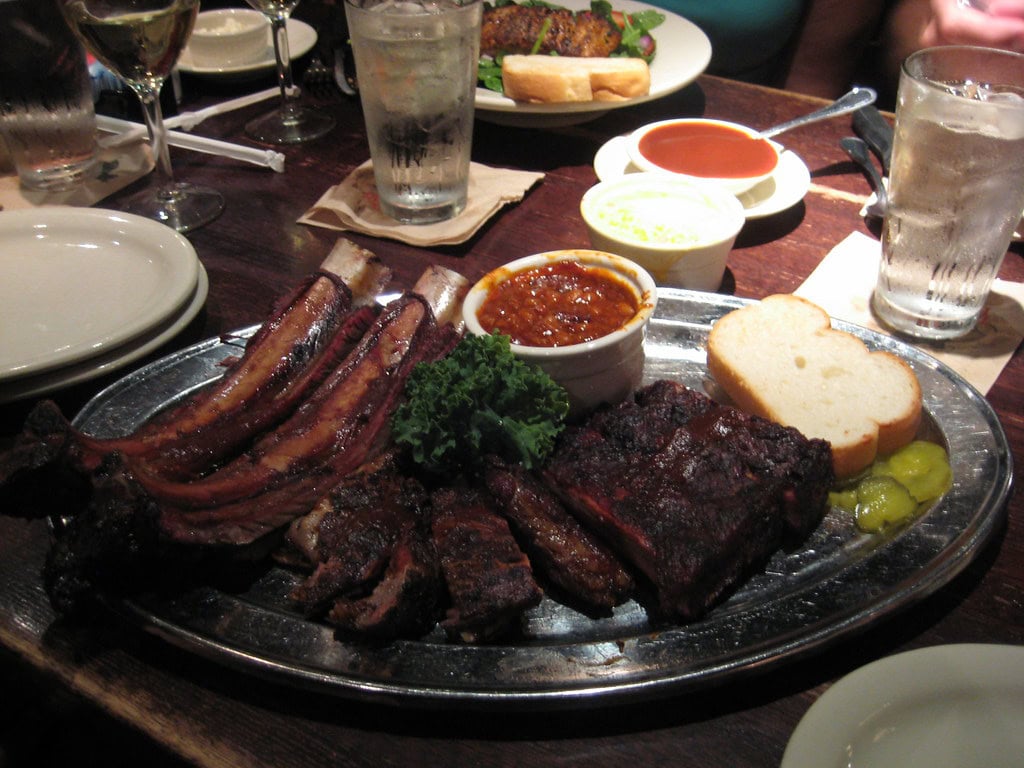
Experimenting with Different Meats
While traditional barbecue focuses on beef, pork, and chicken, some places have started adding new options.
- Turkey - Smoked turkey breast has become more common on Kansas City barbecue menus. It absorbs smoke well and pairs nicely with the region's signature sauce.
- Lamb - Some restaurants, including Jack Stack Barbecue, serve smoked lamb ribs, offering a different texture and richness.
- Fish and Seafood - Smoked salmon and trout have started showing up at a few barbecue spots, giving customers a lighter option that still carries the deep flavors of wood smoke.
Beyond proteins, pitmasters have also experimented with smoking vegetables.
Smoked mushrooms, cauliflower, and even jackfruit have become alternatives for those looking for a plant-based take on Kansas City barbecue.
New Techniques and Equipment
Traditionalists stick to offset smokers fueled by hickory, but some cooks have started using different methods to refine their results.
- Pellet Smokers - These have gained popularity because they provide steady heat and smoke with minimal effort. While some argue that they don't create the same depth of flavor as wood-fired pits, many pitmasters have embraced them for their precision.
- Reverse Searing - Some barbecue joints now finish meats with a quick high-heat sear after hours of slow smoking. This method enhances the crust on brisket and ribs while locking in juices.
- Sous Vide and Smoke - A few places experiment by first cooking meats sous vide, then finishing them in a smoker. This ensures tenderness while still infusing the smoky essence Kansas City barbecue is known for.
Barbecue Fusion and Creative Dishes
Kansas City-style barbecue flavors have spread to other types of cuisine, creating new dishes that blend smoked meats with different styles of cooking.
- Barbecue Tacos - Smoked brisket or pulled pork, served in corn tortillas with slaw and sauce, has become a common sight on menus.
- Burnt End Mac and Cheese - Restaurants have started tossing crispy burnt ends into creamy mac and cheese, creating rich and smoky comfort food.
- Barbecue Pizza - Instead of tomato sauce, some places use Kansas City barbecue sauce as a base, topping the pizza with smoked meats, onions, and cheese.
- Barbecue Egg Rolls - Pulled pork or brisket wrapped in an egg roll wrapper, deep-fried, and served with a side of sauce, has become a popular appetizer in a few spots.
Healthier Approaches to Barbecue
While traditional barbecue isn't known for being light, some restaurants have started offering options for health-conscious diners.
- Low-Sugar Sauces - Many places have begun adjusting their sauce recipes to cut down on sugar while keeping the balance of tang and spice.
- Leaner Meat Choices - Smoked turkey, chicken breast, and even bison have become go-to options for those looking to enjoy a barbecue with less fat.
- Side Dish Alternatives - Instead of baked beans and creamy slaw, some menus now include smoked vegetables, quinoa salads, and vinegar-based slaw.
Kansas City-style barbecue still respects its roots, but it isn't afraid to adapt.
Whether through new meats, different smoking methods, or fusion dishes, the style continues to grow while keeping its signature smoky-sweet flavor intact.

